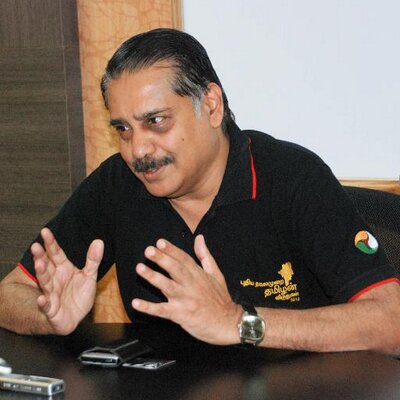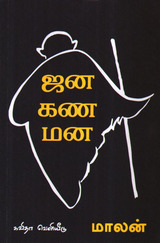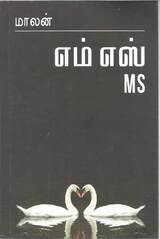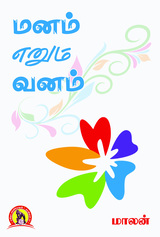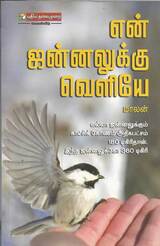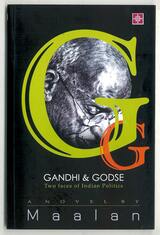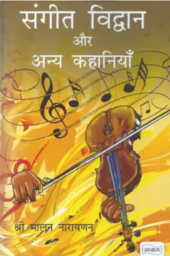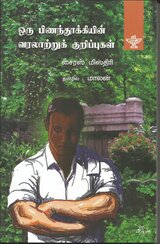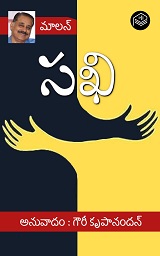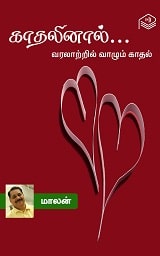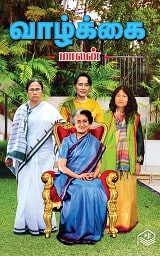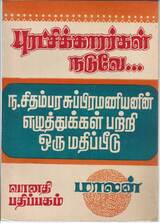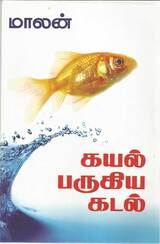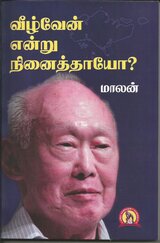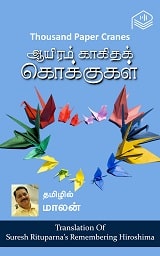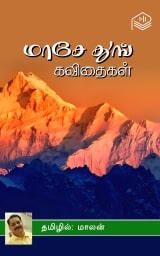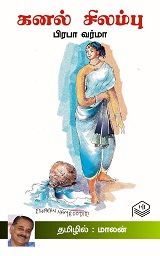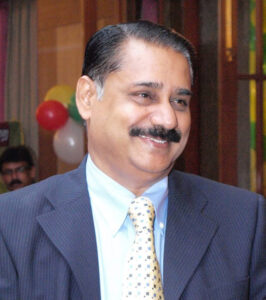75 Years of Swaraj India’
XLVI Indian Social Science Congress,
January 27-31, 2023, Bharathidasan University, Trichy.
The Role of Journalism in the Independence Movement
Maalan Narayanan
It is neither an astonishing coincidence nor a historical accident that almost all the leaders of our freedom movement were journalists. Shunning away the modesty, I would like to rephrase this sentence as most of our pioneer journalists were the leaders of the freedom movement. Yes, Freedom movement all over the country were led by journalists, even before political movements were born in India
This is not a tall claim made out of fraternal affinity. Dadabhai Naoroji ( founder of Rast Goftar), Bal Gangadhar Tilak ( Founder of Kesari, and Mahratta) Gopala Krishna Gokhale (The Hitavada) Aurobindo Gosh (Bande Mataram) G.Subramania Iyer (The Hindu and Swdesamitran) Subramania Bharathi (India) Annie Besant (Home rule) Lajpat Rai (founder –Punjabee, Vandemataram, and Editor of People) Mahatma Gandhi (Young India, Navjeevan, Harijan) Madhan Mohan Malviya ( Hindustan Times) Jawaharlal Nehru (National Herald) Abul Kalam Ghulam Muhiyuddin Ahmed, who adopted Azad as his pen name and honoured with the title of Moulana, ( Vakil) Chakravarthi Rajagopalachari (Vimochnam) are few familiar names we had come across in our textbooks. But there are many unsung and unmourned martyrs about whom I will reminiscent at the end.
The Indian press, while galvanising political movements from the First War of Independence to the Quit India movement consistently for about 100 years (1855 to 1942) was fighting for its own freedom as well.
Raja Rammohan Roy, the first Indian to write in English, is also considered as Father of Indian Language Journalism. He launched two publications Sambad Kaumudi in Bengali in 1821 and ‘Mirat-UL-Akbar’ in Persian in 1822. Soon after their launch, East India Company promulgated Press Ordinance in 1823 which empowered the Company Administration to scrutinise the contents of a newspaper before it is published. Rammohan Roy was the first one to challenge the ordinance in the Supreme court in 1823. This initiative of his brought many intellectuals and reformers in Bengal and elsewhere in favour of Press freedom. Though there were seventy-three Poligar Wars between poligars (military governors appointed by Vijaya Nagar Empire in various territories and they were revered as Kings by people) and British till 1801, when most of them were hanged and some of them brutally banished across the Indian Ocean, it was the struggle of Indian Press that gave a national character to the freedom movement. It may be recalled that during the period between 1780 and 1826 the freedom movement was primarily a movement for freedom for the propagation of a nascent political ideology, Nationalism. This was in a way a response to draconian British laws promogulated during that period. Censorship of Press Act in 1799, Licencing Regulations Act 1823, Press ordinance act in 1823.
In order to take the winds out the sails of Nationalism discourse and to promote Hindu Muslim discord, the British came with ‘philanthropic gestures’ like returning the shops that were confiscated around Golden Mosque in Lahore.
As time passed on, many newspapers, particularly the Indian language journals, sensed the British’s strategy of promoting Hindu-Muslim discord and using it as a weapon to distract people from revolting on a nationwide scale. In 1857, during the first war of independence, Payam-e-Azadi started publication in Hindi and Urdu, calling upon the people to fight against the British. The paper was soon confiscated and anyone found with a copy of the paper was persecuted for sedition.
During this period, Samachar Sudhavarashan, the first Hindi daily, and two newspapers Doorbeen and Sultan-ul-Akhar, published in Urdu and Persian, faced trial in 1857 for publishing a ‘decree’ by Bahadur Shah Zafar, urging the people to drive the British out of India. This was followed by the notorious Gagging Act of Lord Canning, under which all presses had to have a licence from the government. The Act also held that no printed material shall impugn the motives of the British Raj, tending to bring it hatred and contempt and exciting unlawful resistance to its orders.
But authoritarianism has not deterred Indian Press. Repression resulted in a flourish. It resulted in a stir up of the hornet’s nest. The Times of India(1861) Amrita Bazaar Patrika (1868) Statesman (1875) The Hindu (1878) The Tribune (1881) had their genesis during the two decades between 1861 and 1881.
Indian language newspapers were not lagging behind. Many Indian language newspapers emerged with more vigour. According to Indian Office Record in 1873, 224 vernacular newspapers were published and they varied in language and place of origin. British Raj appointed officers to translate and report the extracts from these newspapers.
When the British Government found that the Gagging Act was not potent enough to repress all nationalist sentiments, it created a more forcible law, the Vernacular Press Act of 1878. This time it played its favourite game of ‘divide and rule’ with the press. Drafted by Sir Ashley Eden, Lieutenant Governor of Bengal and passed unanimously by Viceroy’s Council on 14 March 1878, it excluded English Newspapers and focussed on Indian Language newspapers. The most draconian feature of this act, apart from prior restraint, was the empowerment of the police. The act said, what was seditious news was to be determined by the police and not by the judiciary. The affected party could not seek redress in a court of law.
At the time the Vernacular Press Act was passed, Sir Ashley Eden summoned Sisir Kumar Ghosh, editor of Amrita Bazar Patrika and offered to contribute to his paper regularly if he gave him final editorial approval. Ghose refused, and remarked that “there ought to be at least one honest journalist in the land.”
But I must say Ghose was mistaken. When the Act was passed, in Sir Ashley’s own admission that not one, but forty-five seditious writings published in fifteen different vernacular papers were presented to him.
When laws pertaining to publishing news become more strident, journalists devised various other creative ways to circumvent it. They took to creative writing. Girish Chandra Ghosh, editor of Hindi patriot was a playwright too. He published a play Neel Darpan (Blue Mirror) in his paper urging farmers to stop cultivating the indigo crop for white traders. This led to a mass movement all over Bengal which turned violent over a period of time. To quell the unrest British appointed the Neel Commission (Indigo Commission) a commission of enquiry. 134 people (15 government employees, 21 planters, 8 Christian missionaries, 13 zamindars and 77 farmers) submitted their depositions before the commission. Even though the Commission, for the first time in history, laid blame on the European indigo planters for their extra-legal activities, it, however, acknowledged their need for the British empire and did not deem it necessary to enact new laws.
All these struggles, I have stated above, were led by the Indian Press, before the advent of political parties. India did not have a structured party system at that time. Indian National Congress was not born yet. The first-ever session of the Indian National Congress was held in Bombay in December 1885. No wonder the frontliners of the session were journalists. The first-ever resolution at this session was proposed by the editor of The Hindu, G. Subramania Iyer. The second resolution was also moved by a journalist from Poona, Chiplunkar in which the Congress was urged to demand the abolition of the India Council which ruled the country from Britain. The third resolution was seconded by Dadabhai Naoroji who was a noted journalist of his time. The fourth resolution was proposed by Dadabhai Naoroji. In the years that followed many presidents of Congress were either editors, publishers or founders of newspapers. Feroz Shah Mehta of Bombay Chronicle, Madhan Mohan Malaviya of Hindustan, Lajpat Rai of Punjabee, Motilal Nehru of The Leader, Annie Besant of New India and Home rule are a few examples to cite.
On the arrival of the Indian National Congress, the momentum of the nationalist movement picked up since 1900. Sensing it is gathering steam, British Raj came up with more repressive Acts one after another, like the Criminal Law Amendment Act of 1908, Press Act of 1910, Prevention of Seditious Meetings Act of 1911. Among these, the most disastrous of the Acts passed was the Press Act of 1910, which brought over 1,000 newspapers under prosecution and made the coffers of the British Raj richer by Rs 5 lakh in form of securities and forfeitures
Refusing to take the gag orders and threat of dumping in prisons, Indian Press played an invigorating role, consistently for a century, in every battle in the war of our independence, be it protest against Partition of Bengal, protest against Rowlatt Act, Civil Disobedience movement, revolutionary movements, Salt March, Subash Bose’s INA or Quit India movement. During the Quit India movement underground radio sprouted, in which Ram Manohar Lohia and Achyut Patwardhan played a key role, along with Usha Mehta.
It is not an exaggeration if I say the role of the Indian Press during the freedom movement aroused the consciousness of not just Indians but British, Americans, French and others worldwide. The founding of the Ghadar movement and the newspaper Hindustan Ghadar in San Francisco is an example. Madam Bhikaiji Cama’s Paris Indian society is another. Benjamin Guy Horniman, a British journalist working for Daily Herald was yet another. Horniman smuggled into Britain the photographs of the Jallianwala Bagh massacre and its publication created a furore in Britain.
A classic example of a consistent role in spearheading the cause of freedom can be found in Tamil journalism, of which I am reasonably familiar compared to other languages. Historians have classified our freedom struggle into four eras based on the approaches of our leaders: Octavian Hume believed in public weal and patriotism; Determined Tilak demanded purna swaraj; Besant was for home rule and Gandhi motivated millions of masses into political action. Tamil journalism has a classical specimen for each era. Swadesamitran founded by G. Subramania Iyer, who was also one of the founders of the Indian National Congress, reflected the views and values of the Hume era. India, edited by indomitable Subramania Bharathi was the voice of Tilak; Scholarly essayist and eloquent speaker Thiruvarur Virudachala Kalyanasundaram (known popularly as Thiru.Vi.Ka for millions of Tamils) presented the vision of Besant in Tamil, And the veritable Kalki Krishnamurthy was the messenger of Gandhi. All these four editors were exemplary in their skill yet different in their style
G. Subramania Iyer, highly revered as the doyen of journalism and father of public opinion founded Swadesamitran in 1882, four years after he started The Hindu. Swadesamitran was a distinct newspaper in many ways. Iyer is known for his lucid and forthright editorials which he was writing every day, for over 12 years. In 1886, Mr C.D Maclean, Chief administrator of Madras Presidency, in his report to the Governor of Madras stated that the Editorials of Swadesamitran is seditious in nature. To prove his point, he has translated one of the editorials that appeared in 17.5.1886. In this editorial, recalling the attitudes of Duryodhana, Sakuni, characters from the Indian epic Mahabharat, Iyer had illustrated the arrogant nature of the rulers.
Swadesamitran championed the cause of South African Indians even before Gandhi. Gandhi arrived in South Africa in 1893. But Swadesamitran published an editorial on November 1, 1892, discussing the plight of Indians in South Africa. Iyer raised donations for their cause in Madras and the British Raj promptly imposed a fine of 50 pounds on him
Subramania Bharathi was inducted into journalism by Iyer but his writing style was belligerent and sharply critical. After a stint of two years at Swadesamitran, he was hired by a group of radical young men, who founded weekly India, to lead the paper as its de-facto editor. Bhrathi bloomed fully in India. He penned articles that were spitting fire against colonial masters, and equally on his moderate compatriots. He authored editorials incisively analysing budgets, British parliamentary proceedings and the hypocritical and autocratic behaviours of bureaucrats. Bharathi was a fervent Tilakarite and was very outspoken in his writings. Annoyed, the British raj issued a warrant for his arrest and Bharathi self -exiled to the then French territory Puducherry and continued the publication of India.
Bharathi adopted various new initiatives in his paper and one among them was publishing cartoons. He had a strong conviction that if a message has to reach out to the masses, then the medium that carries the message need to be facile. He demonstrated this conviction in whatever he did, be it his poetry, prose or journalism. To enable readers who were deprived of the skills of literacy he introduced cartoons in his India weekly in the year 1909, which is the first of its kind in Indian Language journalism. It was a difficult task and an expensive proposition at that time, as lithography and block making techniques and printing technology were in their early stages
Thiru Vi Ka, a Tamil scholar, essayist and activist known for his analytical depth in his commentaries on classical Tamil literature, was inducted into journalism by Annie Besant when she started the Tamil newspaper Desabhaktan.
In 1916 Annie Besant and Tilak opened a new chapter in the history of India’s freedom struggle at the Lucknow session of the congress held at the end of the year. The main battle was fought in Madras where Mrs Besant’s eloquence and zeal attracted thousands to the movement. The agitation reached a fever pitch in the early months of 1917. The Madras Moderates were the principal aids of Annie Besant in the cause of Home Rule. In this changed condition, the Tamil press had to play a new role in the conflict of energizing identities. The contesting forces of nationalism and communalism called into existence an important Tamil newspaper the Desabhaktan. Publication of newspapers and journals was a difficult undertaking in those days. Thiru Vi Ka. by then had taken an active role in the provincial politics. He resigned from his teaching job in November and on December 7, 1917, the Desabhaktan began as a daily under his editorship.
It is difficult to define Kalki Krishnamurthy. Kalki was a popular editor, a celebrated writer, a veritable humourist, a laudable lyricist and a trusted lieutenant to legendary Rajaji. He started his career as an apprentice under Thiru Vi Ka and after a brief stint at Rajaji’s Vimochanam, he was invited by the legendry filmmaker S.S. Vasan to lead his weekly Ananda Vikatan as its de facto editor. He was known for his editorials written with a sharp satire which irked the British Raj but revelled by his readers. After serving Vikatan nearly for a decade he resigned his position to take part in Satyagraha heeding Gandhi’s call. As one would expect he was imprisoned for the third time. Later he started a weekly in his name and continued his diatribe against British Raj. He established a new genre of blending literary creativity with journalism through his writings.
The journey of the Indian Press during the Independence movement has not only many laurels to rest and but also a martyrdom to treasure. There were hundreds of martyrs who suffered and sacrificed for the cause of press freedom and national independence. I bow my head in respect to those selfless scribes. I would like to reminiscent a few of them before I take leave from the dais.
Maulvi Muhammad Baqar: Many of us might not have heard this name or might have forgotten it as his martyrdom happened during the First War of Independence in 1857. He may be the first journalist martyred in the cause of the freedom of India and of the press. He launched his journal Delhi Urdu Akhbar in 1837 and was writing incognito as he was working in British Collector’s office. He came out in open and did a spot coverage on the uprising in Delhi during the First War of Independence and published the report in his journal dated May 17 1857. It was an eyewitness account of the gruesome suppression of the spontaneous mass uprising.
He was identified by East India Company officials and was made to stand before the mouth of a cannon and blown to pieces in an open field outside the Delhi Gate immediately after the British suppressed the ”mutiny”
After his death, his young son Muhammad Hussain Azad, a renowned Urdu poet was hunted for the seditious poems he wrote in his father’s weekly.
Ganesh Shankar Vidyarthi: Ganesh Shankar who assumed the pen name Vidyarthi (student) was the founder and the Editor of the weekly Pratap. Through his paper, he waged his fights for the cause of oppressed peasants of Rae Bareli, the workers of the Kanpur mills and the downtrodden people of Indian states. During the course of these fights, he had to face numerous prosecutions, pay heavy fines and suffer five prison sentences.
In 1931, Kanpur fell into the madness of communal rioting. Vidyarthi cancelled his scheduled trip to proceed for the Karachi Congress Session and stayed back to douse the communal flames. He had rescued many from both communities, Hindus and Muslims. While he was trying to rescue a group of trapped people Vidyarthi was murdered and it was widely believed it was manifested by the colonial government. Vidyarthi’s disfigured body—showing multiple stab wounds—would only be found a few days later, near litter.
Gandhi paid him a glowing tribute to him in Young India which reads as follows: “The death of Ganesh Shankar Vidyarthi was one to be envied by us all. His blood is the cement that will ultimately bind the two communities. No pact will bind our hearts. But heroism such as Ganesh Shankar Vidyarthi showed is bound in the end to melt the stoniest hearts, melt them into one.”
K Ramakrishna Pillai: Ramakrishna Pillai was the editor of a Malayalam journal Swadeshabhimani published from Travancore between 1906 and 1910. He wrote critical articles against the Travancore State and urged people to demand self-rule. His paper was confiscated by the British, and Pillai was arrested and banished to Tirunelveli, where he spent the rest of his days writing and campaigning for civil rights.
G. Subramania Iyer: Founder of The Hindu and Swadesamitran was a social reformer too. He was excommunicated for having arranged re-marriage for his widowed daughter. He opted to leave The Hindu to his nephew to devote his full time to Swadesamitran as he believed vernacular journalism could contribute more to the freedom movement when less educated masses were drawn into it
He was slapped with sedition charges and he contracted leprosy during his prison life. When he was released, he secluded himself and was taking treatment in a remote place. He lost his eyesight too. He was arrested again when he became blind, again under sedition charges. His end was akin to the Heros of Greek tragedy.
I again bow my head in reverence to the unsung and unmourned heroes of Indian Journalism whose contribution to India’s Independence movement is no way lesser than our esteemed pioneers.

